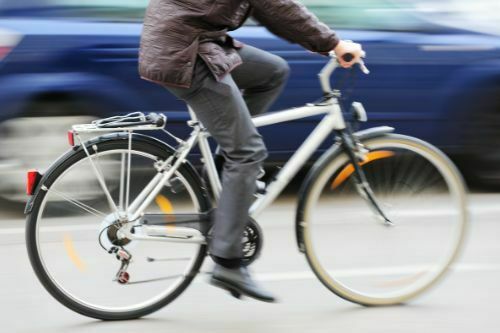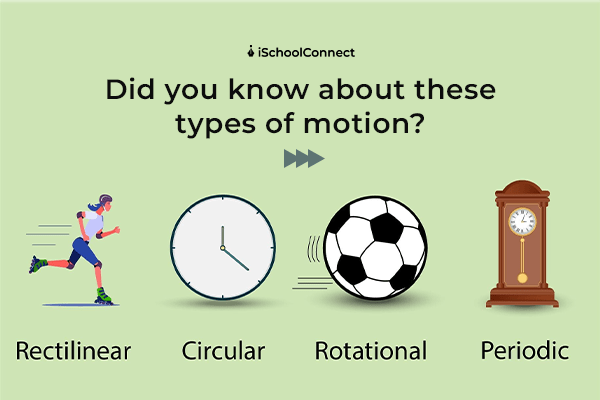Table of Contents
All about motion
When we discuss motion or rest, we are referring to a place known as the origin. So, in terms of the change in position, we have two quantities that are applied in defining that change in position. They are distance and displacement, respectively. So the question is, what is the distinction between the two? Distance is defining as the entire route length covered during the motion. It is expressing by magnitude. Displacement, on the other hand, is the smallest distance between the beginning and end positions. For a comprehensive depiction, both magnitude and direction is required. Read further to know about the various types of motion.
What is motion?
Motion defining as a change in an object’s location concerning time. Motion is seeing a spoon dropping off a table, water running from a pipe, creaking panes, and so forth. Even the air we breathe is in motion! Everything in the cosmos is in motion.
Motion is explaining in terms of the body. The position or orientation of a body changes over time. Translation is movement along a straight line or a curve. Rotation is defining
as motion that changes the orientation of a body. All points in the body have the same velocity and acceleration in both cases . The most common type of motion combines translation and rotation.
We live in a constantly changing universe. The atom, the basic particle of matter, is also in continual motion. Every physical process in the cosmos is making some kind of motion. Motion can be either fast or slow, yet motion exists. Because of the importance of motion in the physical world, we must devote adequate attention to its research.
The following terms are commonly in use to describe motion:
- Distance
- Displacement
- Speed
- Time
Distance & Displacement
As previously defined, distance and displacement are employing to represent location changes. Now, if someone asks how far A is from B, we can’t offer a definitive response since it depends on the path traveled. It might be the same for all three paths. However, because a straight line connects the two places, we can always offer a clear answer for displacement. In other words, displacement is just the shortest distance between two places, which is Path 2 in our example. As we can see, it too has a certain orientation from A to B.
So, now that we have a fundamental understanding of both, let us try to solve an example: Assume the distance between cities A and B is ‘d’. A person travels from A to B and then returns. Determine the distance traveled and displacement.
Formula of distance and displacement
Distance traveled = Total path length covered
= d + d
= 2d
The shortest distance between the beginning and final positions is used to calculate displacement. Both are the same in this situation, thus displacement is also zero.
Types of motion
We may have seen that various items move in different ways. Some items travel in a curved course, while others move in a straight path, and yet others in a different fashion. Motion is categorizing into three kinds based on the nature of the movement:
- Linear Motion
- Rotary Motion
- Oscillatory Motion
Linear motion
Particles in linear motion go from one position to another in either a straight line or a curved route. The linear motion is further classified based on the route of motion as follows:
- Curvilinear motion – The motion’s path is curved.
- Rectilinear motion – The motion follows a straight line.
Some instances of linear motion are train motion, football motion, automobile mobility on the road, and so on.
Rotatory motion
Rotatory motion happens when a body rotates around its axis. Here are a few instances of rotatory motion –
- Rotary motion is showing earth’s rotation on its axis around the sun.
- Rotatory motion is demonstrating the rotation of the wheels and steering wheel about their axis while driving an automobile.
Oscillatory motion

The oscillation of a body around its mean position is referring to as oscillatory motion. Here are some instances of oscillatory motion.
- When a youngster is pushing a swing, the swing swings back and forth about its mean position.
- A clock’s pendulum oscillates as it goes back and forth around its mean position.
- When the guitar string is strumming, it travels to and fro by its mean position, resulting in an oscillatory action.
Motion based on direction or state of motion
There are several other forms of motion depending on the direction or state of motion. Let’s take a look at them one by one.
As per state of motion
Uniform:
The type of motion in which an object travels in a straight line with a constant velocity as it covers equal distances in equal intervals of time, regardless of the duration of the time.
Non-Uniform:
The motion of an object in which the object travels at varying speeds and does not cover the same distance in equal time intervals, regardless of the duration of the time interval
As per directions
One Dimensional :
One dimension implies motion along a straight line or in a single direction.
Two Dimensional:
Object traveling in x and y coordinates with a constant velocity, are known as two-dimensional motion.
Three Dimensional :
Motion in space which incorporates all the X, Y and Z axis is called three dimensional motion.
Some other types of motion are
Translational:
Motion in which all points of a moving body move uniformly in the same direction. If an object is undergoing translatory motion, there is no change in the object’s orientation. Translatory motion is also known as translation motion.
Periodic:
Motion repeating in equal intervals of time. Periodic motion is a performing one.
Circular:
Movement of an object while rotating along a circular path. It is either uniform or non-uniform
Key Takeaways
- Our regular daily activities, such as walking, running, closing the door, and so on, all include motion. The object or subject engaged or involved in these actions moves its position.
- The movement of air into and out of our lungs is one of the types of motion.
- Vehicles that transport passengers from their point of origin to their destination move. In this situation, passengers’ positions are switched from one location to another.
Was this blog on types of motion informative? If so, please share your thoughts in the comments below. Click here to reach out to us for more information on the differences between BE and BTech courses.
We would be happy to assist you with your queries!
Liked this blog? Read next: Concepts of physics that everyone should know of!
FAQs
Q1. What is the shape of a body’s path when it travels uniformly?
Answer – A straight line is the shape of a body’s path when it is moving uniformly.
Q2. What is the most prevalent kind of movement?
Answer – The most common type of motion in sports and physical exercise is general motion.
Q3. Is it true that all motion is interconnected?
Answer – Every movement is linked to a reference frame. Whether a subject is at rest or in motion simply implies that it is being described in relation to a moving frame of reference.






